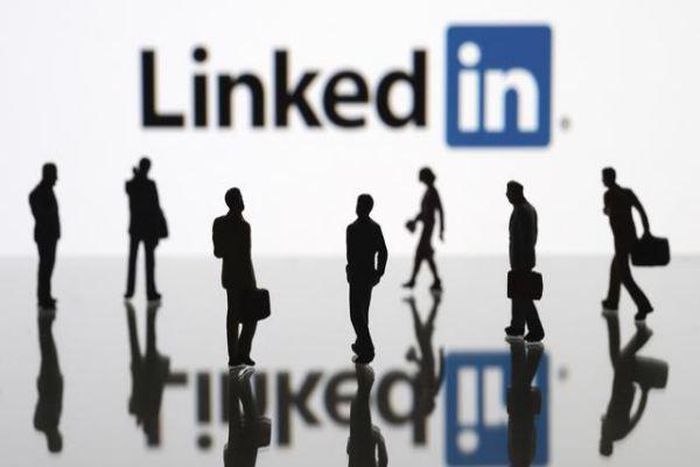Personal data of more than 500 million LinkedIn users was leaked
According to Cyber News, the personal information of 500 million LinkedIn users was leaked and the attacker was selling the data on the Internet, a LinkedIn spokesperson confirmed.

A LinkedIn spokesperson said: 'We are investigating the matter. The practice of collecting LinkedIn member data violates our terms of service. LinkedIn will endeavor to protect its member data sources. '
However, a LinkedIn representative said that the listing database 'is actually a collection of data from a number of websites and companies'. Data from LinkedIn users includes only information that is publicly listed in their profile. 'This is not a LinkedIn data breach,' said a LinkedIn representative.
Currently, LinkedIn has about 740 million users, so the number of affected users is up to two thirds. The leaked information included user ID, name, email address, mobile phone number, job information, gender and other social media accounts. While these types of data are less sensitive, such as credit card details or social security numbers, information like phone numbers can still be used by bad actors for their own gain.
The attacker sold data on hacker forums and provided 2 million copies of the sample data. The Cyber News proofs confirm that the data is coming from LinkedIn users, but they warn it could come from old files, not the latest.
According to analyst Paul Prudhomme at security intelligence firm IntSights, the leak could have come from hackers infiltrating the system through the computers of LinkedIn employees working remotely.
'During the pandemic, the increasing number of employees working remotely and the increasing frequency of use of home and personal devices increased the likelihood of attacks. It is common for companies to be hacked by hackers through employees' accounts and personal devices, and it is also an easy way to bypass corporate cybersecurity defenses, '' said Paul Prudhomme. .
Just a few days ago, a massive data leak regarding the personal information of 530 million Facebook users was confirmed. But Facebook thinks this is an old source of data from 2019. However, some experiments confirm that this data is still useful up to now, and even the head of Facebook - CEO Mark Zuckerberg was exposed. personal phone number in the case.
You should read it
- Microsoft released a completely new LinkedIn application for Windows 10
- What is the standard LinkedIn image size?
- 6 AI-powered features on LinkedIn you may not know
- Steps to delete your LinkedIn account
- What is the mystery behind Microsoft's success with the LinkedIn deal?
- 10 things you may not know about LinkedIn CEO Jeffrey Weiner
- Microsoft integrates LinkedIn with Word to make writing applications easier
- 5 tips for LinkedIn
May be interested
- The attack on Microsoft Exchange increased while WannaCry showed signs of return
 the series of security flaws that have existed for a long time in microsoft exchange and have only recently been patched have attracted a lot of attention from both users and cybercriminals.
the series of security flaws that have existed for a long time in microsoft exchange and have only recently been patched have attracted a lot of attention from both users and cybercriminals. - How to check your Facebook information is leaked or not
 data breach notification service have i been pwned can now check to see if your personal information was exposed in the data leak of more than 500 million facebook users on april 3.
data breach notification service have i been pwned can now check to see if your personal information was exposed in the data leak of more than 500 million facebook users on april 3. - Microsoft warns of an increasing trend of attacks targeting firmware and worrying public indifference
 this is indeed a worrying 'lethargy', especially given the recent increase in the number of attacks targeting system software.
this is indeed a worrying 'lethargy', especially given the recent increase in the number of attacks targeting system software. - Malicious code is hidden in cheats and mods that target the gaming community
 recently, international security researchers are noticing an increasing trend in threat agent cases targeting the gaming community.
recently, international security researchers are noticing an increasing trend in threat agent cases targeting the gaming community. - A ransomware declared decommissioned and refunded the ransom to the victim
 declared decommissioning and returning the ransom to the victim are certainly extremely rare in the world of ransomware.
declared decommissioning and returning the ransom to the victim are certainly extremely rare in the world of ransomware. - QNAP provides an emergency warning about NAS device attack trends, showing how to secure NAS devices
 nas (network attached storage), also known as a network hard drive, is a device that is installed to serve the needs of storing or accessing data.
nas (network attached storage), also known as a network hard drive, is a device that is installed to serve the needs of storing or accessing data.






 49 million Instagram users leak personal information, mostly celebrities
49 million Instagram users leak personal information, mostly celebrities Hackers leaked 20 million information to BigBasket users for free
Hackers leaked 20 million information to BigBasket users for free 26 billion users' personal records exposed in the biggest leak on the Internet
26 billion users' personal records exposed in the biggest leak on the Internet Personal data of 15 million Trello users leaked on hacking forum
Personal data of 15 million Trello users leaked on hacking forum How to check your Facebook information is leaked or not
How to check your Facebook information is leaked or not